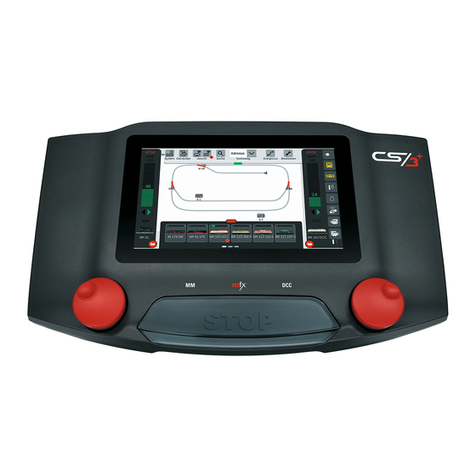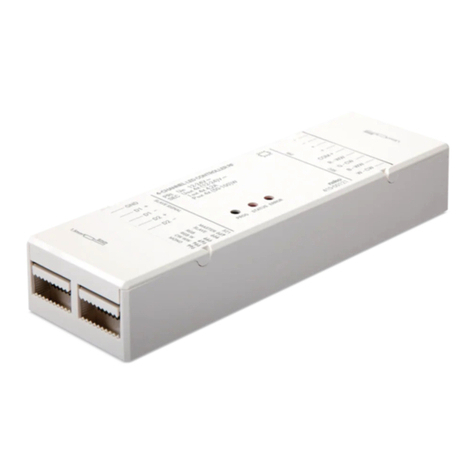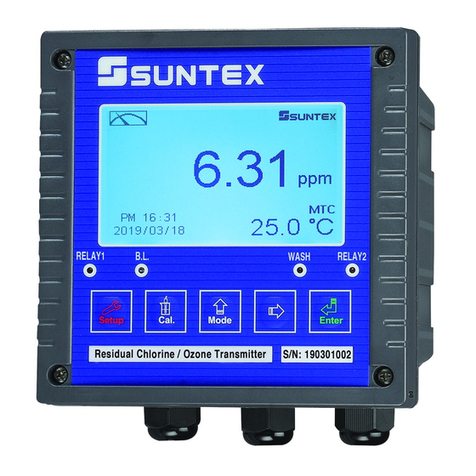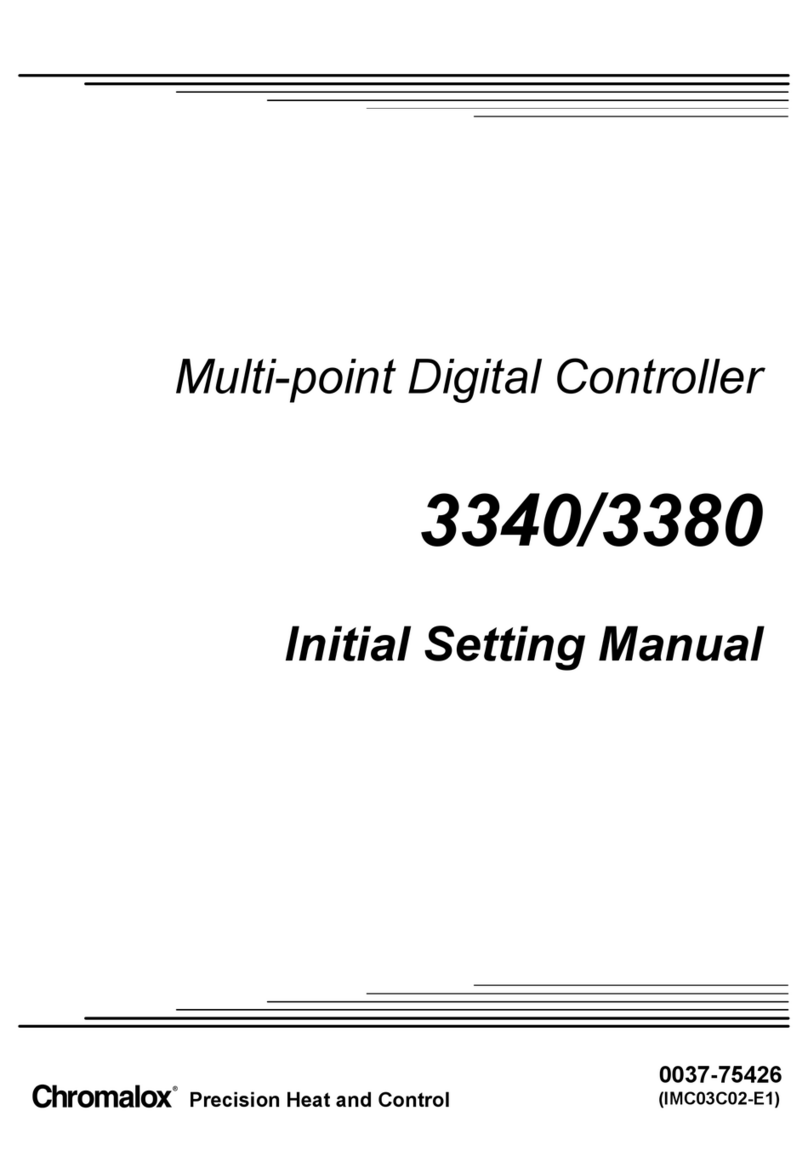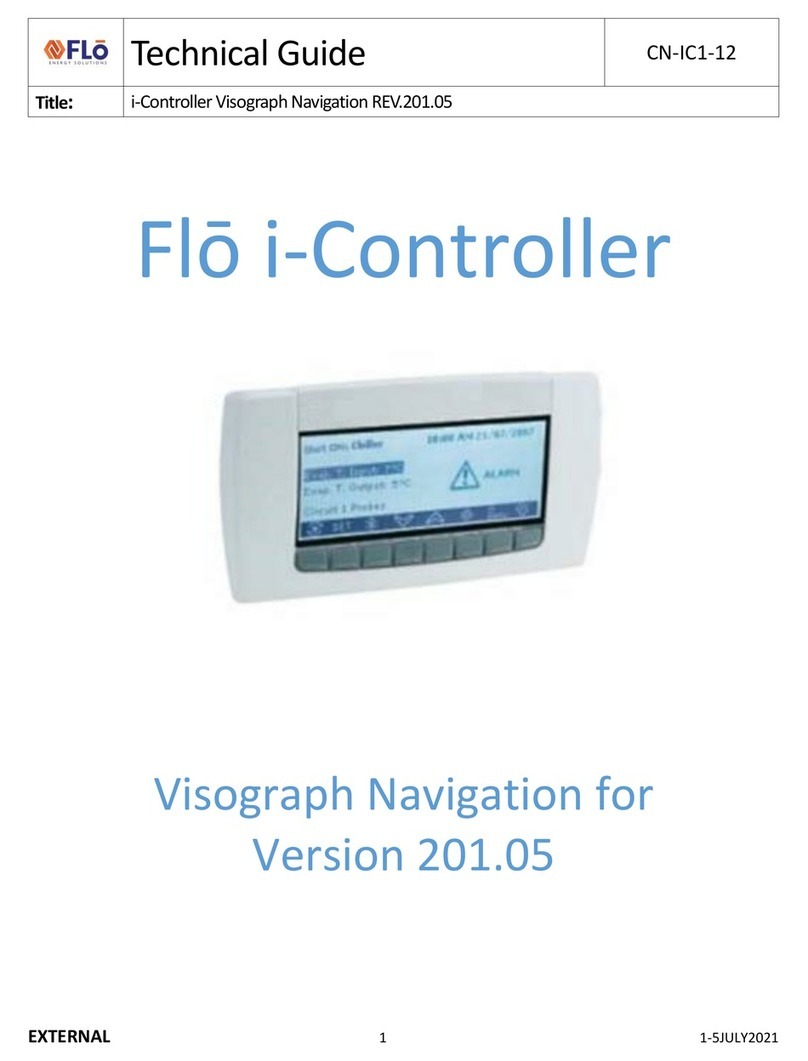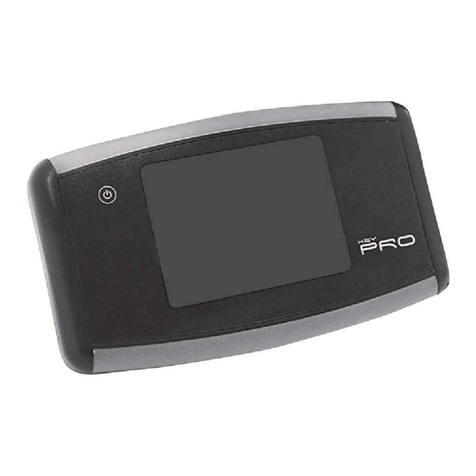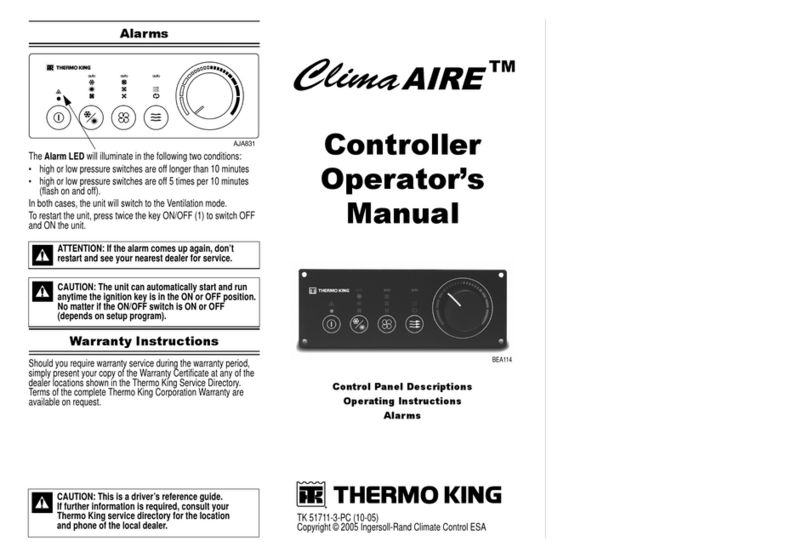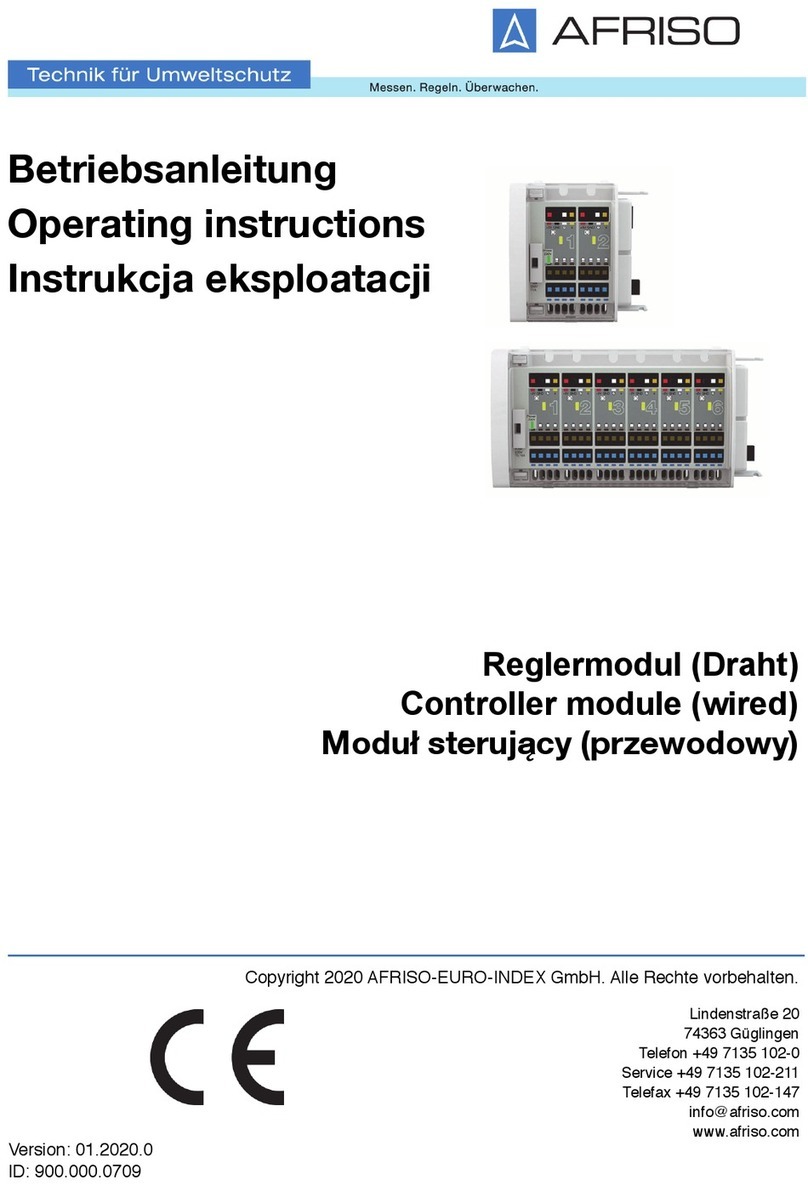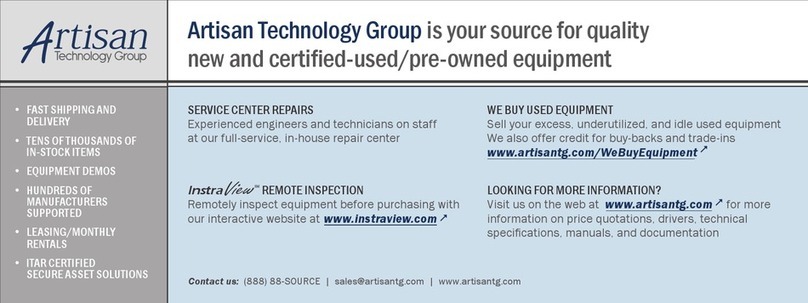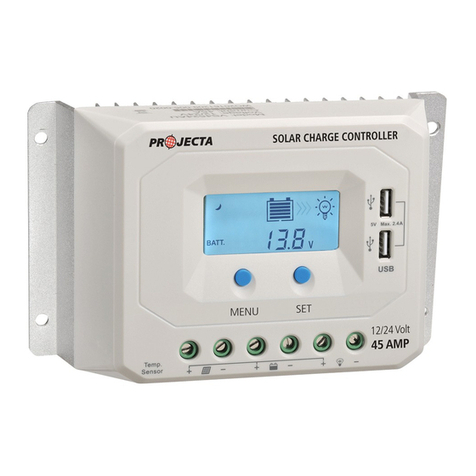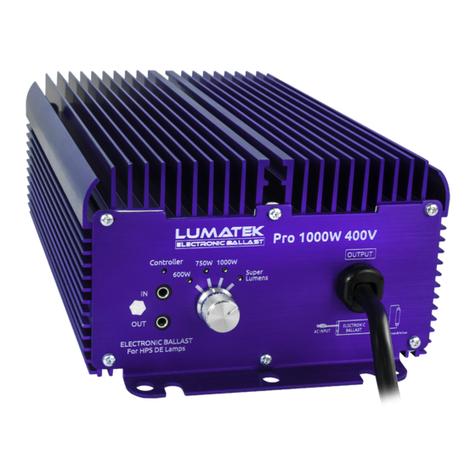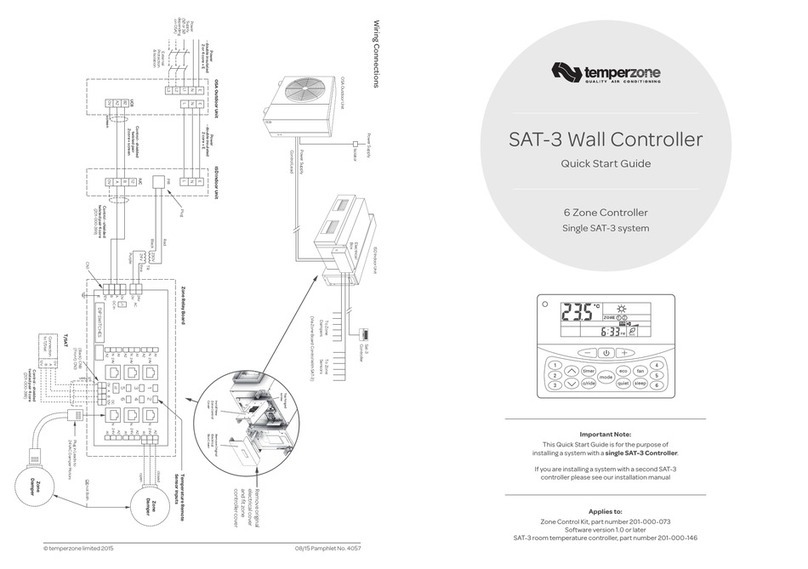Promation Engineering P1-12VN4 AC User manual

Installation & Operation
Manual
This IOM is for the following
ProMation Engineering Products:
P1-12VN4 AC
P1-12VN4 DC
P1-24VN4 AC
P1-24VN4 DC

This page intentionally left blank

FM14_P1 LV VN4 Ver J 101614
Page 1 of 14 P1 LV AdVanced Proportional Series
Table of Contents
2 ................... Product Specifications
3 ................... Shipping and Handling
3 ................... Product Mounting and Setup
3 ................... Installation Notes
4 ................... Wiring Diagram
5 ................... Layout of Controller
6 ................... Check End of Travel Settings
6 ................... Check End of Travel Settings
6 ................... Status Indicators:
7 ................... Adjusting the actuator CCW and CW positions
8 ................... Adjusting the actuator Auxiliary Switches
9 ................... Mechanical Data
10 .................. Mechanical Data
11 .................. Commissioning
12 .................. AutoCalibration Procedure
Field Manual
P1- Series LV
AdVanced Proportional
Control
ISO5211 F03/05 8P14

Introduction
This document provides necessary information for set-up, calibration, testing and use of the P Series quarter-turn
electric actuators stated on the cover page. Each unit is shipped from the factory with initial calibration of mechanical
stops, cams and switches completed for 0-90 degree operation. However, these are general settings and serve as
a starting point for proper calibration of the actuator in its real-world application.
Safety
Safety is a basic factor any time you maintain and operate mechanical equipment. Appropriate handling methods
and proper use of tools and clothes can help prevent serious accidents -- accidents which can cause injuries
to you or a fellow worker. This manual was created to enable a trained user to install, adjust and troubleshoot
your ProMation actuator.
Only competent and trained personnel should install, maintain and operate ProMation Actuators. Any work
related to this actuator must be carried out in accordance with this manual and related codes and regulations.
Local workplace health and safety rules should always be followed.
Duty cycle
Duty cycle is the percent of time that an actuator spends running as a fraction of the total time. Duty Cycle is
directly related to heat; excessively repositioning an actuator typically results in motor overheating which can
cause permanent damage and/or reduced service life.
Duty cycle can be calculated as follows:
(example P2 series actuator running 3 seconds ON and 30 seconds OFF)
Runtime = 3s, Total time = 3s + 30s = 33s, therefore this duty cycle would be 9% (3/33)
Additionally, ProMation P series actuators are designed for a maximum of 1200 starts per hour (one start every
3 seconds maximum).
50°F
10°C
75°F
24°C
100°F
38°C
125°F
52°C
150°F
65°C
25%
50%
75%
100%
On/Off/Jog
Proportional
Ambient Temperature
FM14_P1 LV VN4 Ver J 101614
Page 2 of 14 P1 LV AdVanced Proportional Series
Product Specications
Actuator Specications P1
Torque “lb/Nm 300”lbs/35Nm
Supply Voltage 12vac/dc 24vac/dc
Max Inrush Current 2.0A 1.1A
Running Current 1.9A 1.1A
Motor DC Brush Type
Runtime (90°@60Hz/vdc) 15 sec
Runtime (90O@50Hz) 15 sec
Duty Cycle 75% maximum
Motor Starts 1200 per hour
Weight 5lbs/3kg
Mechanical Connections ISO5211 F03/F05 8pt 14mm
Electrical Entry (2) 1/2” NPT
Electrical Terminations 14-18ga
Environmental Rating NEMA 4/4X
Manual Override 8mm Socket Drive
Control Proportional
Actuator Case material Aluminum Alloy, Powder coated
Motor Protection 230°F/110°C Thermal F* Class
*Totally Enclosed Non-Ventilated Motors
Ambient Temperature
Operating Range
-22°F to +125°F
-30°C to +52°C

FM14_P1 LV VN4 Ver J 101614
Page 3 of 14 P1 LV AdVanced Proportional Series
The actuator is shipped from the
factory in its fully CW position.
The top illustration shows
Red for CW, Yellow for CCW.
1. This actuator is shipped in the FULLY CW (position indicator shows “CLOSE”)
position.
2. NOTE, THIS ACTUATOR MUST HAVE WATER TIGHT EMT FITTINGS, WITH
CONDUIT DRAINAGE INSTALLED AND POWER SUPPLIED TO UNIT TO
KEEP THE HEATER WARM AT THE TIME OF INSTALLATION.
3. Storage: This unit should NOT be stored outside unless it is powered up
and has proper conduit terminations. When NOT powered up, it should be
stored in a clean, dry environment at all times.
4. This actuator has been factory calibrated to operate between 0 degrees and
90 degrees. Most quarter-turn products will not require recalibration of
these settings. If any travel adjustment is necessary, please refer to pages 7 &
8 for instructions.
5. The actuator CANNOT operate with a rotation greater than
90 degrees.
1. Fully CLOSE the valve or damper to which the actuator is to be mounted.
• Keep in mind this actuator rotates CW (as viewed from above the unit) when driving CLOSED.
2. Assemble necessary linkage components and attach the actuator to the driven device.
3. Tighten mounting bolts, making sure actuator is centered on the device drive shaft.
4. Utilize the manual override (8mm hex output drive on bottom of actuator) to check for unobstructed manual operation
from fully CW to fully CCW positions BEFORE applying power to the unit.
Warning: DO NOT operate manual override when power is present. Geartrain damage
and personal injury may occur.
Do not use powered tools to turn the manual override -- it will DAMAGE the gear train or
motor and VOID the warranty.
5. Make the electrical connections per wiring diagram on page 4.
• Connect AC HOT or DC+ to terminal marked 5 and AC NEUTRAL or DC- to terminal marked 4.
• Actuator accepts a 4-20mA Control Signal ONLY.
• Connect control wires to the control card terminals marked 6 (COM) and 7 (+IN). The positive wire MUST connect
to terminal 7 or the controller will not function.
• Wires may be connected to terminals marked 11 (COM) and 12 (+OUT) for remote position indication.
• Terminals 7-12 on the switch card (430-10100) are for the (adjustable) aux switches. They are dry type Form C
rated 3A @ 250vac MAX.
• The drain wire on the signal cables must be grounded at ONE END ONLY! (Preferably at the supply end).
6. Do NOT apply power at this time.
• There are no mechanical stops on this model.
• These actuators are designed to be used between a horizontal and upright position. Do NOT mount the assembly with
the actuator top below a horizontal position.
• When installing conduit, use proper techniques for entry into the actuator. Use drip loops to prevent conduit condensate
from entering the actuator.
• Both NPT conduit ports MUST use proper equipment to protect the NEMA 4X integrity of the housing.
• The internal heater is to be used in ALL applications.
• Do NOT install the actuator outdoors or in humid environments unless it is powered up and the heater is functioning.
• Use proper wire size to prevent actuator failure (see chart on page 4 for proper wire sizing).
• All terminals accept 14-18AWG solid/stranded wire.
Shipping and Handling
Product Mounting and Setup
Installation Notes

FM14_P1 LV VN4 Ver J 101614
Page 4 of 14 P1 LV AdVanced Proportional Series
Proportional Control
Wire sizing data is provided in the Wire Sizing Data table to assist in
the selection of the proper wire size for ProMation P1 series actuators
using various wire sizes over distance. Please make sure to reference the
correct voltage and do not exceed the indicated length of the wire run for
each model.
Wiring Diagram
The default settings in the controller are as follows:
1. Input/Output Signal: 4-20mA only
2. Signal Response: Direct Acting (max signal = CCW)
3. Loss of Signal: Fail in Position
4. Sensitivity Setting 3: Approximately 30 steps for 90°
12/24VAC or 12/24VDC
AC Hot or DC+
AC Neu or DC- WHT BLK
Wire Sizing Chart
MAX distance between Actuator
and Supply (feet)
Actuator/
Voltage
P1
12VAC/DC
P1
24VAC/DC
2.0A 1.1A
18 41 150
16 65 236
14 105 381
Wire
Gage
Amps

FM14_P1 LV VN4 Ver J 101614
Page 5 of 14 P1 LV AdVanced Proportional Series
Default Settings
DIP Switch Setting
(Default)
Functions
DIP 1 Off Run Mode
DIP 1 On Calibration (CAL) Mode
DIP 2 Off Direct Acting Mode
DIP 2 On Reverse Acting Mode
DIP 3 Off DIP 4 Off Stay in Place on LOSS of Input Signal
DIP 3 Off DIP 4 On CW on LOSS of Input Signal
DIP 3 On DIP 4 Off CCW on LOSS of Input Signal
DIP 3 On DIP 4 On Invalid Setting
DIP 5 Off Power OFF
DIP 5 On Power ON
Cycle DIP 5 after making any
DIP Switch settings.
Reverse Acting Mode
Direct Acting Mode
Signal
Signal
90°
90°
Layout of Controller
Diagnostics (Blue LED)
Signal Reversed Indicator
(Orange LED)
Terminal Block Power
(Yellow LED)
4 Pin Connector
to Switch Card
P1 24VN4-AC Shown
3 Pin Connector
to Potentiometer
Calibration Button
5 position DIP Switch
DIP 5
Running CW
Indicator (Red LED)
Running CCW
Indicator(Green LED)
Proportional Control

Condition Control Card
Indicator Status Description
Power On (DIP 5 on) Yellow LED On Steady Normal Operation Board has power
Power On (DIP 5 on) Blue LED Blinking at 1 Hz Normal Operation Control Signal received at terminal
Power On (DIP 5 on)
Blue LED Flashes 3 times
rapidly followed by a one
second pause
Invalid Control
Signal
No or Low Control signal.
Check incoming control signal.
Power On (DIP 5 on)
Blue LED Flashes 3 times
rapidly followed by a one
second pause AND
Orange LED On
Invalid Control
Signal
Control (4-20mA) input wires
reversed (minimum 12mA signal
needed). Reverse Control Leads.
Power On (DIP 5 on)
No Motor Movement
Blue LED Flashes 4 times
rapidly followed by a one
second pause
Motor Stall
Feedback Potentiometer does not
sense movement. Check for Motor
problem. Inspect for loose gears,
potentiometer, wiring, etc
Power On (DIP 5 on)
Blue LED Flashes 5 times
rapidly followed by a one
second pause
Potentiometer Fault
Incorrect potentiometer adjustment
prior to running AutoCalibration.
Adjust Feedback Potentiometer
values to be in range.
Power On (DIP 5 on)
Blue LED Flashes 5 times
rapidly followed by a one
second pause
Travel Fault
Potentiometer Fault during
Calibrate Feedback step of
AutoCalibration. Adjustments to
End of Travel cams have set the
rotation for >90° travel. Reset to
90° travel and AutoCalibrate.
Power On (DIP 5 on)
No Motor Movement
Red or Green Motor
Direction LEDs Flash Low Power Incoming Power too low
The actuators are tested, calibrated and shipped in the Full CW position in the Direct Acting mode (CW is 4mA, CCW is
20mA). End of Travel cams are set at 90 degrees from each other.
A. Set the control device (valve or damper) to the closed position.
B. Mount the actuator to the device to be controlled (valve or damper).
C. Insure that the CW End of Travel cam trips the CW End of Travel switch at the correct CW point.
C.1. If the switch does not change state at the correct CW position, adjust Cam #2 per instructions on page 7.
D. Manually move (see Manual Override on page 6) the actuator so the valve or damper is in the fully CCW position. This
mustbe≤90degreesofthefullCWposition.
E. Insure that the CCW End of Travel cam trips the CCW End of Travel switch at the correct CCW point.
E.1. If the switch does not change state at the correct CCW position, adjust Cam #1 per instructions on page 7.
If the End of Travel cams are adjusted at all, then an actuator must be recalibrated.
F. Test actuator and device with a control input signal to insure that control signal corresponds to correct actuator and
device position.
Check End of Travel Settings
FM14_P1 LV VN4 Ver J 101614
Page 6 of 14 P1 LV AdVanced Proportional Series
Check End of Travel Settings
Status Indicators:

Remove power from this device BEFORE making any End of Travel cam adjustments.
If the End of Travel cams are adjusted at all, the actuator must be recalibrated. Travel
cams must be set with a rotation of 90 degrees or less for a successful AutoCalibration.
Cam 1 Adjustment
1. The lower cam is Cam 1, the CCW end-of-travel adjustment. Once the actuator
is at its required CCW position, with POWER OFF, use a 2.5mm hex key to
free up the cam set screw. Once it is free, rotate the hex key to the LEFT 10-15
degrees to reset the switch roller arm. Then snug the set screw up against the
camshaft (CW) until slight pressure is felt. Then SLOWLY rotate the hex key
pushing the cam to the RIGHT until you hear the “click” on the bottom switch
indicating that correct adjustment has been achieved. Tighten the cam.
2. Apply power to the actuator and drive CW at least 15-20 degrees. Then drive
the actuator CCW until the cam stops the electrical travel. Check to be sure this
is the correct CCW position you require. Repeat step 1 if further adjustment
is needed.
3. If using the Auxiliary Switches, adjust Cam 3 per instructions on page 8.
Cam 2 Adjustment
7. The second cam is Cam 2, the CW end of travel adjustment. Once the actuator
is at its required CW position with POWER OFF, use a 2.5mm hex key to free
up the cam set screw. Once it is free, rotate the hex key to the RIGHT 10-15
degrees to reset the switch roller arm. Then snug the set screw up against the
camshaft (CW) until slight pressure is felt. Then SLOWLY rotate the hex key to
the LEFT until you hear the “click” on the second switch indicating that correct
adjustment has been achieved. Tighten the cam set screw.
8. Apply power to the actuator and drive CCW at least 15-20 degrees. Then drive
the actuator CW until the cam stops the electrical travel. Check to be sure this
is the correct CW position you require. Repeat step 1 if further adjustment is
needed. Remove power from the actuator.
9. If using the Auxiliary Switches, adjust Cam 4 per instructions on page 8.
Cam 1
Cam 2
NC
NO
COM
LESS
CW
CW
LIMIT SWITCH
FURTHER
CW
FURTHER
CCW
CCW
LIMIT SWITCH
LESS
CCW
NC
NO
COM
NC
NO
COM
LESS
CLOSED
CLOSED
LIMIT SWITCH
FURTHER
CLOSED
FURTHER
OPEN
OPEN
LIMIT SWITCH
LESS
OPEN
NC
NO
COM
NC
NO
COM
LESS
CW
CW
LIMIT SWITCH
FURTHER
CW
FURTHER
CCW
CCW
LIMIT SWITCH
LESS
CCW
NC
NO
COM
NC
NO
COM
LESS
CLOSED
CLOSED
LIMIT SWITCH
FURTHER
CLOSED
FURTHER
OPEN
OPEN
LIMIT SWITCH
LESS
OPEN
NC
NO
COM
FM14_P1 LV VN4 Ver J 101614
Page 7 of 14 P1 LV AdVanced Proportional Series
Adjusting the actuator CCW and CW positions (Cam adjustment)

Remove power from this device BEFORE making any End of Travel cam adjustments.
Cam 3 Adjustment
3. The third cam is Cam 3, the CCW auxiliary switch adjustment. Drive the
actuator to its CCW position. Then use a 2.5mm hex key to free up the cam
set screw. Once it is free, rotate the hex key to the LEFT 10-15 degrees to
reset the switch roller arm. Then snug the set screw up against the camshaft
(CW) until slight pressure is felt. Then SLOWLY rotate the hex key and cam
to the RIGHT until you hear the “click” on the third switch. Continue to rotate
the cam between 3 and 5 degrees to the RIGHT to make sure the auxiliary
cam switch changes state before the actuator reaches its end of travel
electrically. Tighten the cam set screw.
Cam 4 Adjustment
3. The fourth cam is Cam 4, the CW auxiliary switch adjustment. Drive the
actuator to its CW position. Then use a 2.5mm hex key to free up the cam
set screw. Once it is free, rotate the hex key to the RIGHT 10-15 degrees to
reset the switch roller arm. Then snug the set screw up against the camshaft
(CW) until slight pressure is felt. Then SLOWLY rotate the hex key to the
LEFT until you hear the “click” on the fourth switch. Continue to rotate the
cam between 3 and 5 degrees to the LEFT to make sure the auxiliary
cam switch changes state before the actuator reaches its end of travel
electrically. Tighten the cam set screw.
Cam 3
Cam 4
Warning: DO NOT operate manual
override when power is present. Geartrain
damage and personal injury may occur.
Do not use powered tools to turn the
manual override -- it will DAMAGE the gear
train or motor and VOID the warranty.
Manual Override
FM14_P1 LV VN4 Ver J 101614
Page 8 of 14 P1 LV AdVanced Proportional Series
Adjusting the actuator Auxiliary Switches

Manual Override
1
1
2
2
A A
B B
Drawn By
Finish
Promation Engineering Inc.
16138 Flight Path Drive
Brooksville, Fl 34604
Phone: 352-544-8436
Fax: 352-544-8439
This Document is the property of ProMation Engineering,
Inc. Distribution of this document without the written
consent of the owner is Strictly forbidden.
Failure to comply will incur a liability for Damages.
Checked By
4/15/2014
P1 Proportional Dimensional Data
Rev.
C
NO SCALE Sheet Number: 2
Material
ProMation Engineering, Inc.
KHL
KHL
4/24/2013
P1 F05 8P14 DimData.idw
Created:
Last Checked:
Part No.
Dwg. Name
P1 Dimensional Data for Proportional Units
Engineering Change Notice
Change Date Description Name
08.21.2013 New Document KHL
04.15.2014 Added tolerance on drive coupling data KHL
10.07.2014 Pushed square dimension to three decimal places KHL
REV
A
B
C
D
E
F
Dimensional Tolerances (Unless Otherwise Noted):
X ±2.5mm [X.X ±.1]
X.X ±.3mm [X.XX ±.01"]
X.XX ±.13mm [X.XXX ±.005"]
ALL TOLERANCE FEATURES IN mm
Drive Coupling Fabrication Data
14.00 -.13
.00
+mm
0.551 -0.005
0.000
+in
14.00 -.13
.00
+mm
0.551 -0.005
0.000
+in
15.00 mm
0.591 in
66 mm
2.6 in
57 mm
2.2 in
114 mm
4.5 in
106 mm
4.2 in
183 mm
7.2 in
Add 115mm
[4.5"] to allow
for cover
removal
8 mm
0.3 in
14.00 mm
0.551 in
Square
50 mm
2.0 in
BHC
36 mm
1.4 in
BHC
8 mm
0.3 in
M6x1(4)
10mm
0.4"
M5x0.8(4)
8mm
0.3"
F03/F05 ISO Flange
79 mm
3.1 in
35 mm
1.4 in
(2) 1/2" NPT
EMT Entry
Depth Height
Width
P1 Proportional Series Dimensional Data
FM14_P1 LV VN4 Ver J 101614
Page 9 of 14 P1 LV AdVanced Proportional Series
Mechanical Data

P1 Series Exploded View
(P1-120VN4 unit is shown)
Position indicator
viewport
Easily distinguishable
yellow/red position
indicator
Heavy Duty
Drive Motor
Easily accessible
switch & cam stacks
Switch Card
Proportional Control Card
Spacer
Anti-Condensation
Heater
Aluminum Casting
NEMA 4X Protection
Aluminum Casting
NEMA 4X Protection
NEMA 4X Cover Seal
Switch Logic Map and
Switch/Cam Arrangement
Switch sequencing data is provided in the table
below to show the change-of-state points during
the rotation of the actuator from CCW to CW
and back again. The red bar shows when that
terminal makes with its respective common.
Switches 1 and 2 are set at the factory
and should NOT be changed. The
INCLUDED auxiliary switches SW3 &
SW4 are for terminals 7 thru 12 and those
set points may be modified if need be.
FM14_P1 LV VN4 Ver J 101614
Page 10 of 14 P1 LV AdVanced Proportional Series
Mechanical Data
}
F
E
C
B
A
SW3 CCW AUX
(Factory Set - Adj)
SW4 CW AUX
(Factory Set - Adj)
}
}
Common Switch Terminal
Open
Not Closed
Closed
Not Open
Used by
Controller
-5°0°
CW CCW
85°
5°90°95°

FM14_P1 LV VN4 Ver J 101614
Page 11 of 14 P1 LV AdVanced Proportional Series
Commissioning
This procedure will assume that the actuator is installed correctly both mechanically and electrically with correct power at
terminals marked 4 & 5 and control signal (4-20mA) at terminals marked 6 & 7.
1. Apply the correct supply power to the actuator. (DIP 5 ON)
• NOTE - Power is measured at terminals marked 4 & 5 on the actuator.
• The POWER (Yellow) LED will illuminate whenever power is on.
1.A NORMAL OPERATION
I. TheDiagnostics(Blue)LEDwillashonceeverysecondifthecontrolsignaliscorrect(between4and20mA)
II. Proceed to step 2.
1.B FAULT STATUS
I. TheDiagnostics(Blue)LEDwillshowaFAULTbyashing3timesfollowedby1secpause.Theactuatorwill
not operate correctly while in a FAULT status.
1a. The Diagnostics (Blue) LED shows FAULT if the Control Wires are not in place or out of range.
• If the Control Wires are connected at terminals marked 6 & 7 and there is still a FAULT, generate a
20mA control signal across terminals marked 6 and 7 (from the PLC or utilize a signal generator)
1b. The Diagnostics (Blue) LED shows FAULT AND the ORANGE LED is illuminated if the Control Wires are
reversed at terminals marked 6 & 7.
NOTE - The control signal can be measured with a digital multimeter set for mA connected in series with
terminal 7.
II. When FAULT is cleared proceed to step 2.
2. Test Full CW and CCW Positions for Direct Acting Mode (DIP 3 set to OFF)
2.A Generate a 20mA control signal at the PLC or signal generator.
I. The actuator will drive to the full CCW position (as viewed from ABOVE the actuator).
II. If this is NOT the correct stop position, refer to Adjusting the actuator CCW position instructions for CAM 1 on
Page 7 in this document.
2.B Generate a 4mA control signal at the PLC or signal generator.
I. The actuator will drive to the full CW position (as viewed from ABOVE the actuator).
II. If this is NOT the correct stop position, refer to Adjusting the actuator CW position instructions for CAM 2 on
Page 7 in this document.
3. Test Full CW and CCW Positions for Reverse Acting Mode (DIP 3 set to ON)
3.A Generate a 20mA control signal at the PLC or signal generator.
I. The actuator will drive to the full CW position (as viewed from ABOVE the actuator).
II. If this is NOT the correct stop position, refer to Adjusting the actuator CW position instructions for CAM 2 on
Page 7 in this document.
3.B Generate a 4mA control signal at the PLC or signal generator.
I. The actuator will drive to the full CCW position (as viewed from ABOVE the actuator).
II. If this is NOT the correct stop position, refer to Adjusting the actuator CCW position instructions for CAM 1 on
Page 7 in this document.
NOTE- The feedback signal generator shows the 4-20mA position output at terminals marked 11 (-) & 12 (+).
IF THE END OF TRAVEL CAMS ARE ADJUSTED, THEN THE ACTUATOR MUST BE RECALIBRATED. REFER TO
THE AUTOCALIBRATION PROCEDURE ON PAGE 12.

Use Wire to Jumper
connector pins 7 and 12
AdVanced Controller
Calibration
Actuator may be
put into service
Calibration is not
necessary
Set DIP 5 to OFF Wire the actuator per
the wiring diagram
Were CW
or CCW End of
Travel cams changed
from factory
settings?
Is power
supplied to the
board?
PWR
NO
YES
YES
NO
Set DIP 5 to ON
4. Blue LED blinks 5 times
5. Blue LED goes off
6. Red LED goes on and motor drives actuator to fully CW
7. The CW End of Travel switch opens and motor stops
8. The Green LED goes on and motor drives to fully CCW
9. The CCW End of Travel switch opens and motor stops
10. Red LED goes on and actuator drives to 50% position
11. The controller performs internal test of the potentiometer position
PWR
Actuator will start
the Potentiometer
calibration routine:
DIAG
DIAG
Set DIP 1 to ON
FM14_P1 LV VN4 Ver J 101614
Page 12 of 14 P1 LV AdVanced Proportional Series
AutoCalibration Procedure

Potentiometer Pass
Potentiometer Fail
1. Loosen
potentiometer
drive gear
(2.5mm hex)
2. Adjust
gear slowly
until Blue
LED stops
BLINKING
3. Tighten potentiometer drive gear
(2.5mm hex)
4. Set DIP 5 to Off and repeat
potentiometer calibration routine
Is the Blue LED
ON steady?
Is the Blue
LED blinking 5
times?
NO
YES
YES
NO
Cycle DIP 1 OFF
then back ON to
Calibrate Feedback
2. The CW End of Travel switch
opens and motor stops
3. The Green LED goes on and
motor drives to Fully CCW
4. The CCW End of Travel switch
opens and motor stops
5. Red LED goes on and actuator
drives to Fully CLOSED
6. The controller performs an internal
Calibration of the Feedback
Blinking
Blinking
DIAG
DIAG
DIAG
DIAG
Steady
Actuator will start the
Feedback calibration
routine:
Actuator continues
Feedback calibration
routine:
1. Red LED goes on and motor drives
actuator to fully CW
Reset Cams per
instructions on pages 6-8.
Cam Settings must be
inspected. Actuator travel
must be 90° or less.Cam
setting changes have
likely made the adjusted
travel >90°.
FM14_P1 LV VN4 Ver J 101614
Page 13 of 14 P1 LV AdVanced Proportional Series

Set DIP 1 to OFF
Set DIP 5 to OFF
Blue LED now blinks at
1Hz rate indicating no
control signal input
Blue LED now blinks at
1Hz rate indicating no
control signal input
Feedback Calibration
Pass
Feedback Calibration
Fail
20Hz Blink
30 seconds
1Hz Blink
Indefi nitely
20Hz Blink
3 seconds
NO YES
Did the Blue LED
ashat20Hzforthree
(3) seconds?
DIAG
DIAG
DIAG
Check that Wire Jumper
connecting pins 7 and 12
is in place
1Hz Blink
Indefi nitely
DIAG
AutoCalibration Complete
Proceed to Commissioning
FM14_P1 LV VN4 Ver J 101614
Page 14 of 14 P1 LV AdVanced Proportional Series

ProMation Engineering, Inc. 16138 Flight Path Drive Brooksville, FL 34604 Phone (352) 544-8436 Fax (352) 544-8439
www.promationei.com

Industrial Applications
ProMationEngineeringactuatorshavebeeninstalledtooperateprocesscontrolssuchasbuttery
valves, ball valves, high performance valves, plug valves, gate valves and dampers, in a broad
range of demanding industrial applications.
Power
Generation
Water
Processes Mining Oil and Gas Agriculture Chemicals
16138 Flight Path Drive
Brooksville, FL 34604
Phone (352) 544-8436 Fax (352) 544-8439
email: sales@promationei.com
Complete Support
Full Documentation
Weoffercompletewiringdiagrams,fieldinstallationmanualsandsetup
documentation for all our products, both in printed and digital form. We
regularly host customized educational webinars for our customers.
RapidQuote
Most quotes and estimates are generated within hours of the request.
ProMation Engineering Services
ProMation Engineering can provide design and technical services for
OEM’s, projects with customized requirements and specialized operations.
ProMation Engineering is committed to providing superior customer support
for your sales, project management and installation teams. Contact us today.
ProMation Engineering follows a policy of continual product updates and enhancements. Our website
is the best place to obtain the latest product documentation, including the wiring diagrams for these
controllers. Visit us at www.promationei.com or use the code to link to the site.
Use your smart phone barcode
scanner app here.
This manual suits for next models
3
Table of contents
Other Promation Engineering Controllers manuals
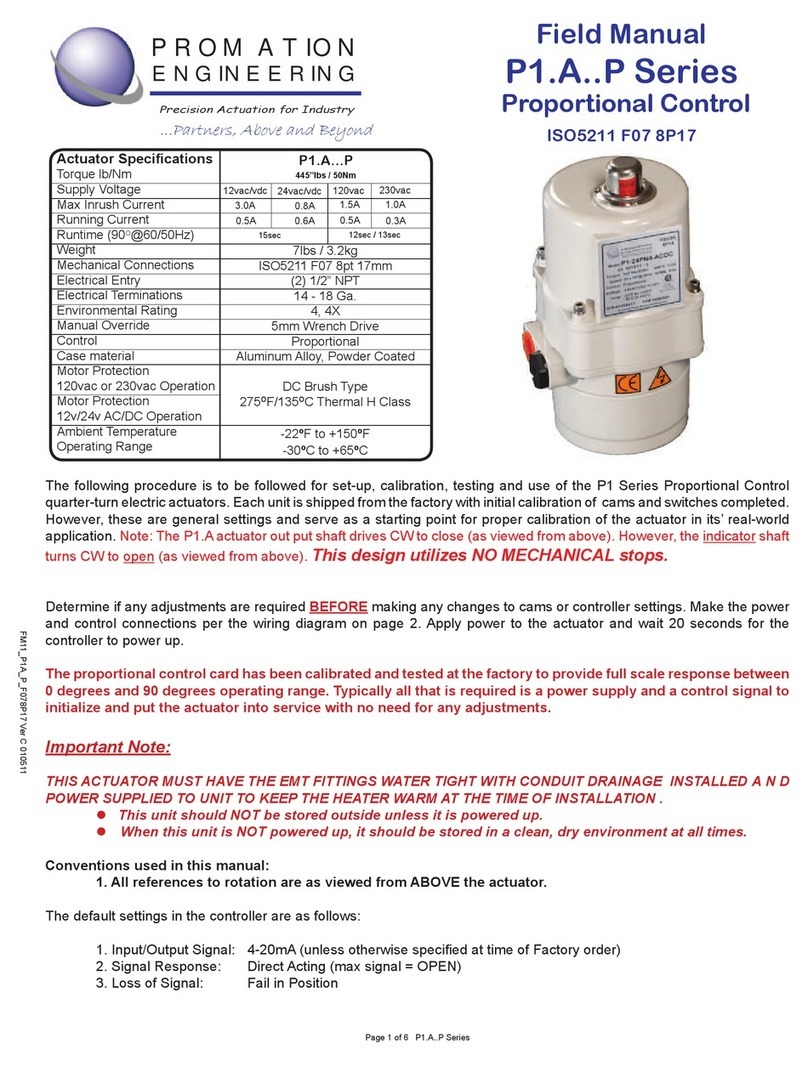
Promation Engineering
Promation Engineering P1 A P Series User manual
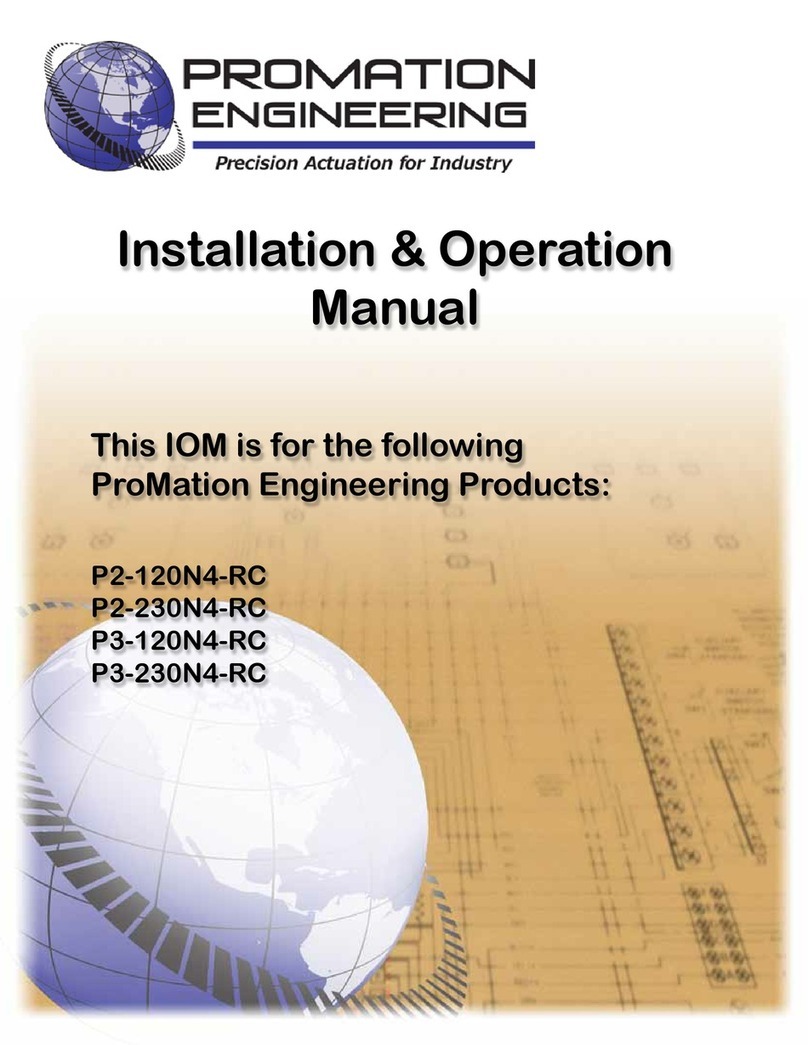
Promation Engineering
Promation Engineering P2-120N4-RC User manual
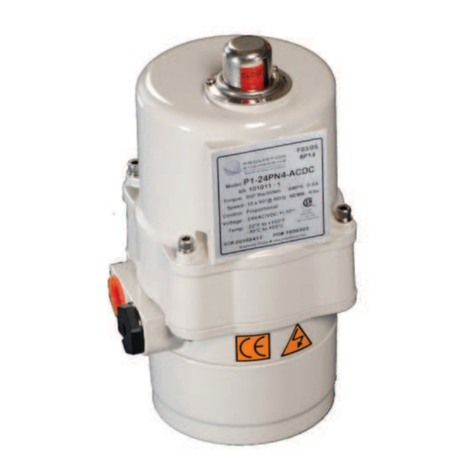
Promation Engineering
Promation Engineering P1 A P-XOV Series User manual
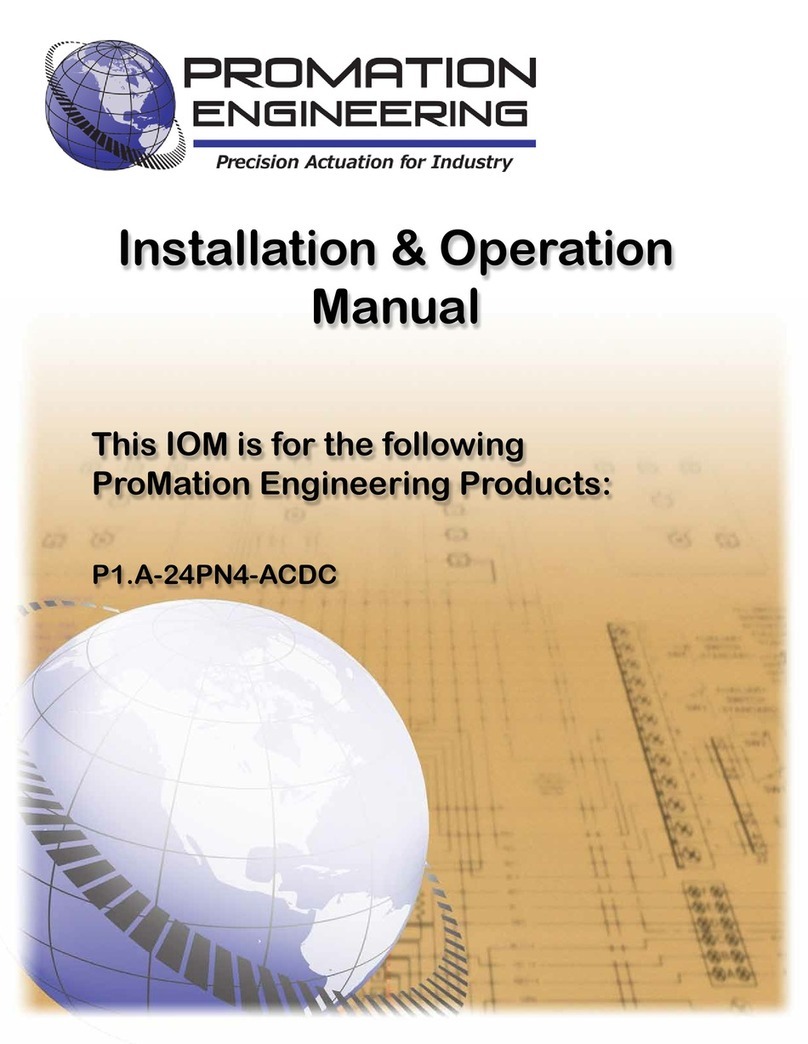
Promation Engineering
Promation Engineering P1.A Series User manual

Promation Engineering
Promation Engineering P7-120PN4-HR User manual
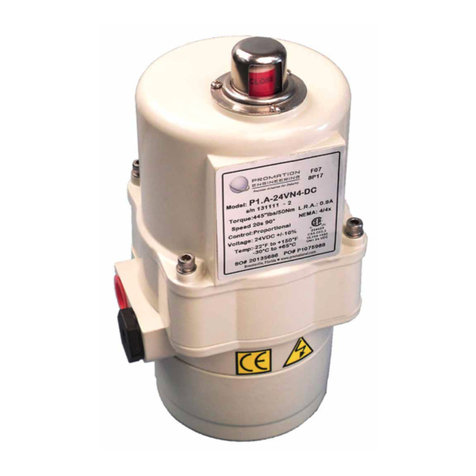
Promation Engineering
Promation Engineering P1.A Series User manual
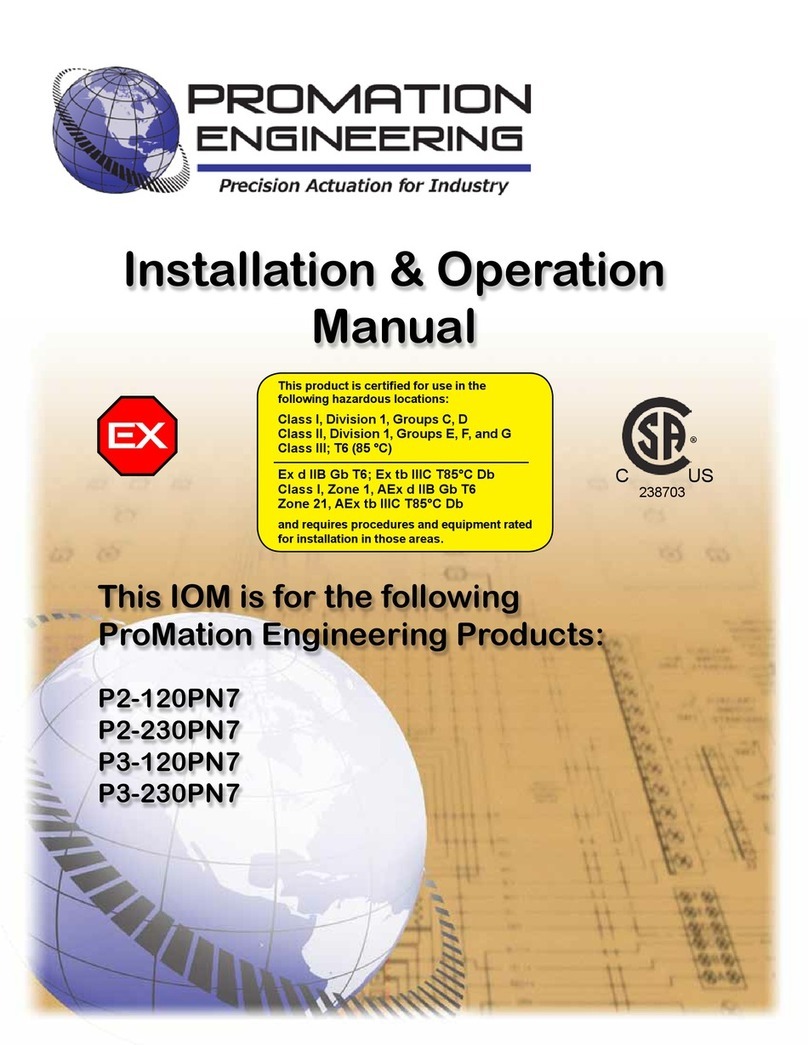
Promation Engineering
Promation Engineering P2 Series User manual
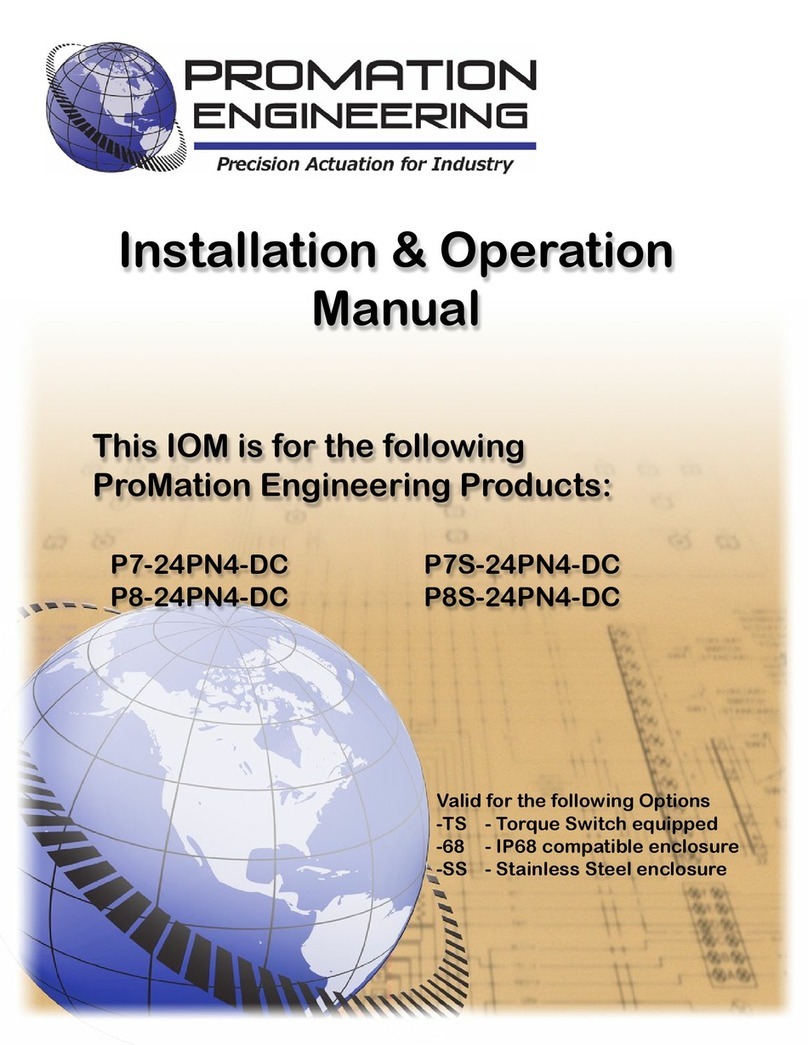
Promation Engineering
Promation Engineering P7-24PN4-DC User manual
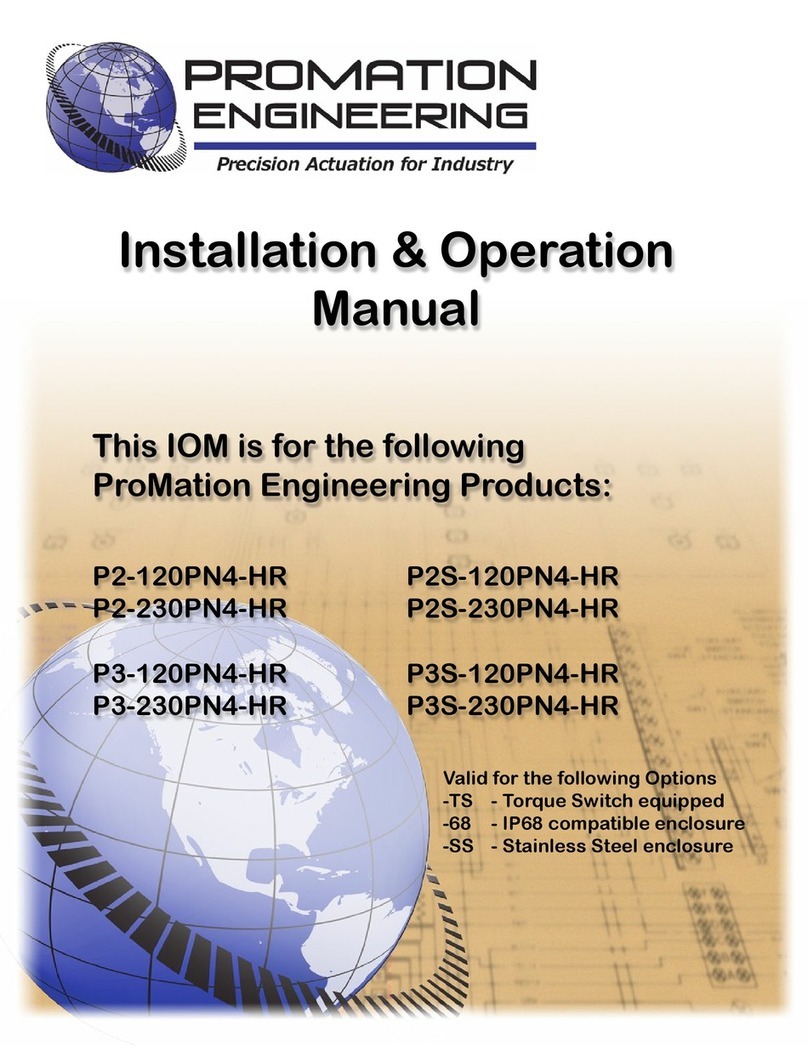
Promation Engineering
Promation Engineering P2-120PN4-HR User manual
